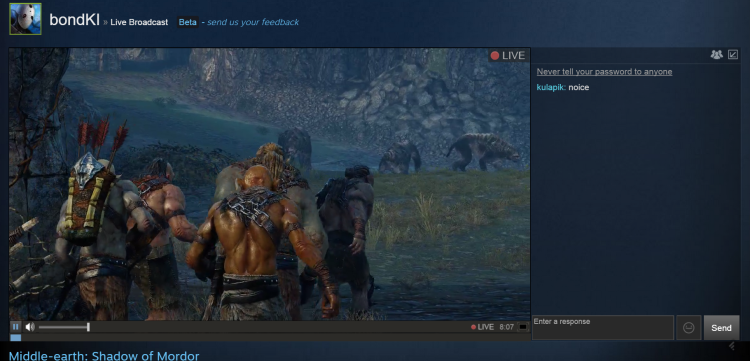Twitch is the biggest name in video game livestreaming, but it’s about to get some competition from the biggest name in PC gaming.
Valve, the creator of the seminal Half-Life shooter franchise and the Steam digital-distribution platform, introduced Steam Broadcasting today. When playing a game on the network, you can now livestream gameplay video to Web as well as the Steam client, and others can now watch you play as well. The service is in a testing phase, but it’s open to anyone willing to opt into Steam’s latest beta release.
In August, Internet retail giant Amazon spent $970 million to purchase livestreaming site Twitch. And you can stream what you play on both the PlayStation 4 and the Xbox One. All of this signifies a maturation of the gameplay-broadcasting medium, and now Valve is ready to get on board.
Several gamers are already live right now on Steam’s new Broadcast page. You can get to the video portal from your browser or by logging into the Steam client.
In order to broadcast yourself, follow these instructions:
- Boot up Steam.
- Go to the “Steam” option on the menu bar.
- Select “Settings.”
- Under the “Account” tab, change your beta participation to “Steam Beta Update.”
- Restart Steam.
In order to start broadcasting, Steam’s system is a bit weird. It won’t start until one of your friends asks to watch your game. At that point, Steam asks you if you want to let them watch, let only your friends watch, or let anyone watch.
For now, Steam doesn’t appear to have advertising on its Broadcasts. That is unlike sites like Twitch and Hitbox. This also means, unlike those sites, that Steam doesn’t have a partner program where livestreams can earn money from their audiences.
VentureBeat's mission is to be a digital town square for technical decision-makers to gain knowledge about transformative enterprise technology and transact. Learn More

